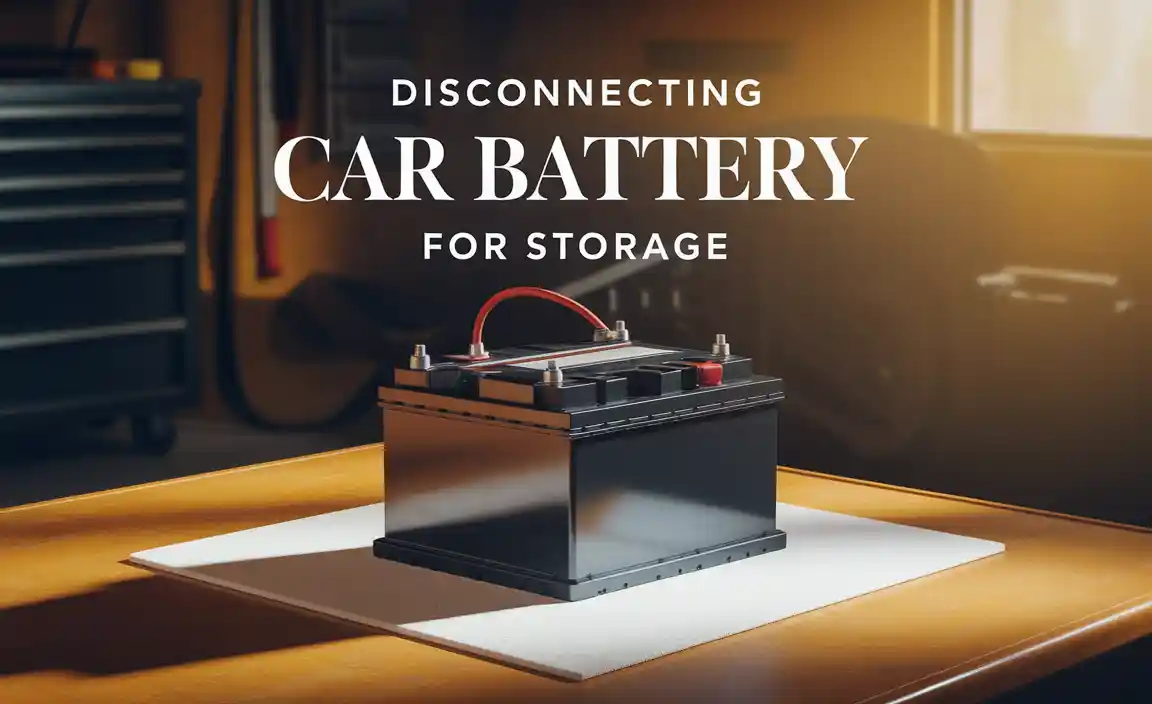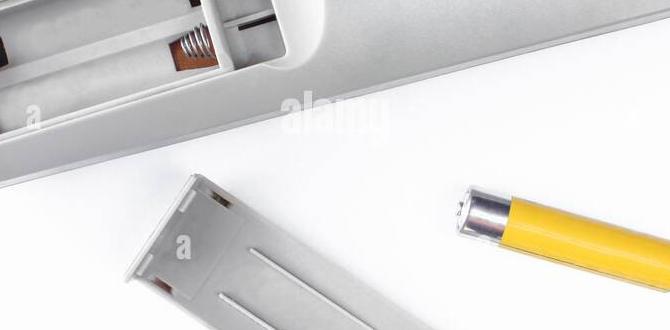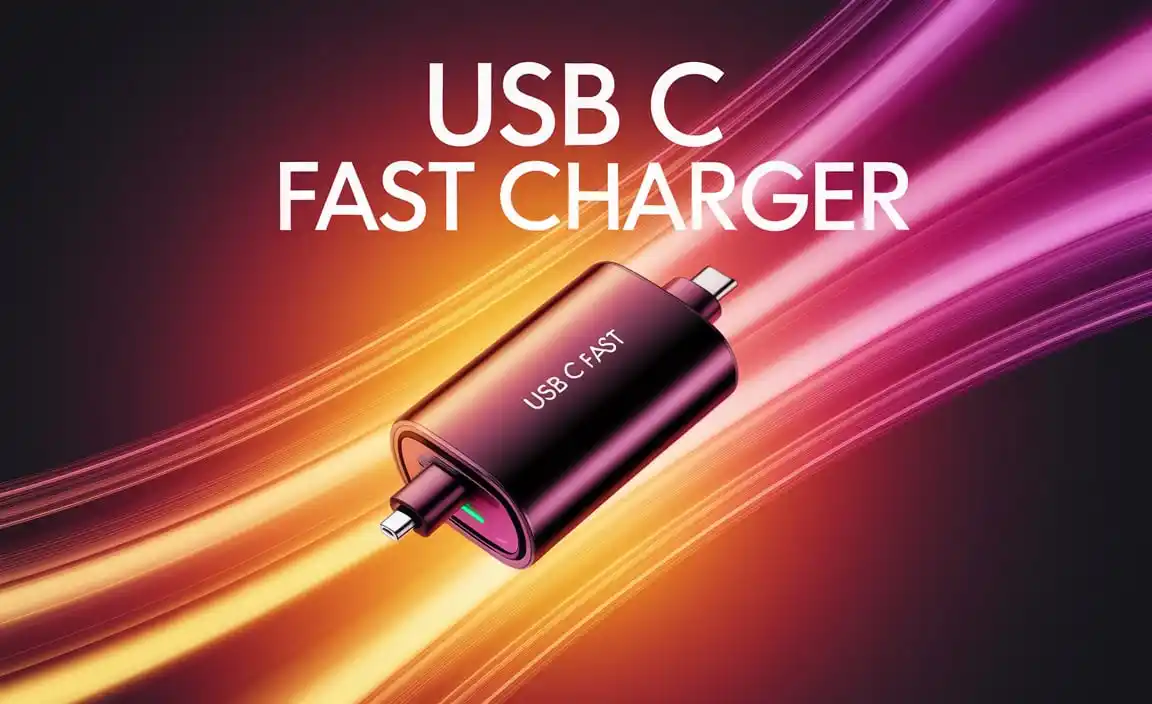Quick Summary: Car battery chargers typically cost between $20 and $200. Basic trickle chargers start around $20, while advanced smart chargers with multiple modes can range from $50 to $150. High-end professional chargers may go over $200. The price depends on features like charging speed, battery type compatibility, and extra functions.
How Much Are Battery Chargers For Cars? Your Essential Guide
Is your car battery feeling a little tired? Don’t worry, it happens to the best of us! A dead battery can be a real headache, leaving you stranded and frustrated. But before you call for expensive towing, a good battery charger might be all you need. Finding the right one can seem confusing with all the options out there, but it doesn’t have to be.
This guide is here to make understanding car battery chargers simple. We’ll break down what they do, what to look for, and most importantly, how much they cost. You’ll feel confident choosing a charger that fits your needs and your budget. Let’s get your car ready to roll again!
Why You Might Need a Car Battery Charger
Car batteries are the heart of your vehicle’s electrical system. They store the power needed to start your engine and run accessories like lights, the radio, and air conditioning when the engine is off. Over time, and with use, batteries can lose their charge. This can be due to a few common reasons:
- Infrequent Use: If your car sits for long periods, the battery can slowly discharge.
- Extreme Temperatures: Both very hot and very cold weather can affect battery performance and lifespan.
- Old Age: Like all batteries, car batteries have a limited lifespan, typically 3-5 years.
- Electrical Issues: Sometimes, a parasitic drain (a component drawing power when it shouldn’t) can kill a battery.
- Accessory Use: Leaving lights or the radio on after the engine is off is a classic way to drain a battery.
Recognizing these signs early can save you a lot of trouble. A charger is a fantastic tool to help maintain a healthy battery or to bring a dead one back to life, often preventing the need for a costly replacement or a tow truck.
Understanding Different Types of Car Battery Chargers
Not all battery chargers are created equal. They range from simple devices that provide a slow, steady charge to sophisticated units that can diagnose and revive batteries. Knowing the types will help you understand pricing and choose the best fit for your situation.
1. Trickle Chargers
These are the most basic and often the most affordable chargers. They provide a very low, slow current to the battery. Think of it like a gentle, constant sip of power. They are excellent for maintaining a battery’s charge, especially in vehicles that aren’t used regularly.
- Pros: Very inexpensive, simple to use, won’t overcharge, ideal for long-term battery maintenance.
- Cons: Very slow, not suitable for deeply discharged batteries, takes a long time to fully charge a dead battery.
2. Automatic / Smart Chargers
These are the most popular choice for a reason. Smart chargers use microprocessors to monitor the battery’s voltage and adjust the charging rate automatically. They can safely bring a dead battery back to life and then switch to a maintenance mode, so you don’t have to worry about overcharging.
- Pros: Safe to leave connected, multiple charging stages (bulk, absorption, float), can often revive moderately discharged batteries, protect against overcharging, typically have indicator lights.
- Cons: More expensive than trickle chargers, may not recover severely damaged batteries.
3. Battery Maintainers
Similar to trickle chargers but often with a bit more intelligence, battery maintainers are designed to keep a battery at its optimal charge without overcharging. They are perfect for seasonal vehicles like RVs, motorcycles, or classic cars that sit idle for months at a time.
- Pros: Great for long-term storage, prevents sulfation (a battery-killing buildup), energy efficient.
- Cons: Not designed for charging a completely dead battery, can be more expensive than basic trickle chargers.
4. Jump Starters / Portable Chargers
These devices are a bit different. They are portable units containing a powerful battery that can give your car enough of a boost to start the engine, essentially acting as a temporary replacement battery. Many newer models also include charging ports for your phone and other devices, making them versatile.
- Pros: No need for another car or power outlet to jump-start, portable, many have extra features (phone charging, LED lights).
- Cons: Can be expensive, require their own charging, capacity varies greatly.
5. Professional / High-Amperage Chargers
You’ll often see these in auto repair shops. They offer very fast charging rates and can handle multiple battery types and sizes. They are powerful tools for mechanics but usually overkill and too expensive for the average car owner.
- Pros: Very fast charging, powerful, versatile for various battery types.
- Cons: Expensive, can be complex to use, not necessary for most home users.
How Much Do Car Battery Chargers Cost? A Price Breakdown
The price of a car battery charger can vary significantly based on its type, brand, features, and charging power. Here’s a general idea of what you can expect to spend:
Price Range for Different Charger Types
| Charger Type | Typical Price Range (USD) | Best For |
|---|---|---|
| Trickle Charger | $20 – $50 | Maintaining a good battery, infrequent users. |
| Automatic/Smart Charger | $50 – $150 | General use, bringing discharged batteries back, convenience. |
| Battery Maintainer | $40 – $100 | Seasonal vehicles, long-term storage. |
| Jump Starter (with charging) | $70 – $200+ | Emergency starts, portable power, tech users. |
| Professional/High-Amperage | $150 – $500+ | Heavy use, professional mechanics, fleet owners. |
As you can see, you can get a functional battery charger for a very reasonable price, especially if your needs are simple. For most everyday drivers, a good automatic or smart charger hits the sweet spot between cost and performance.
Factors Influencing the Cost of a Car Battery Charger
Why the price difference? Several factors make one charger cost more than another:
- Charging Amperage: This refers to how much current the charger can deliver. Higher amperage means faster charging. A charger with a 10-amp setting will charge a battery much faster than one limited to 2 amps. Higher amperage chargers usually cost more.
- Smart Features: As mentioned, microprocessor-controlled “smart” chargers cost more than simple manual chargers. These features include multi-stage charging, battery testing, desulfation modes, reverse polarity protection, and error detection.
- Battery Type Compatibility: Many modern chargers can handle different battery types (e.g., lead-acid, AGM, gel, lithium-ion). The more types a charger supports, the more versatile and often more expensive it will be.
- Brand Reputation and Quality: Well-known brands that have a history of producing reliable automotive tools often command higher prices. This can be worth it for peace of mind and durability.
- Durability and Build Quality: A charger with a robust casing, high-quality cables, and durable clamps will generally be more expensive than a flimsy one, but it will last longer. Look for chargers with heavy-duty clamps and thick gauge wiring.
- Additional Features: Some chargers come with extra perks like built-in voltmeters, temperature sensors to prevent overcharging in hot conditions, or even engine start assist capabilities, all of which can add to the cost.
Choosing the Right Charger for Your Needs
To pick the best charger without overspending, think about:
- How you use your car: If it’s a daily driver, a smart charger is a great all-around choice. If it sits for months, a maintainer is ideal.
- Your budget: Be realistic about what you need. A $30 trickle charger might be enough if you only need to top up occasionally.
- Battery type: Make sure the charger is compatible with your car’s battery chemistry (most common is lead-acid, but modern cars often use AMG or EFB).
- Desired charging speed: If you need to charge a dead battery quickly, look for higher amperage settings (e.g., 10A or more).
- Safety features: Always prioritize chargers with reverse polarity protection and short-circuit protection.
Estimating Charging Times
Charging time depends heavily on the battery’s condition, its capacity (measured in Ampere-hours or Ah), and the charger’s amperage output. Here’s a simplified way to estimate:
Formula: Battery Ah / Charger Amps = Estimated Charging Hours (for a fully discharged battery)
Example: A 50 Ah battery being charged by a 5-amp charger would take approximately 10 hours to fully charge. However, this is a simplified calculation. Smart chargers often have multi-stage charging, meaning the initial high-amperage charge slows down as the battery gets fuller, making actual times vary.
Where to Buy Car Battery Chargers
You have several options for purchasing car battery chargers:
- Auto Parts Stores: Places like AutoZone, O’Reilly Auto Parts, NAPA, and Advance Auto Parts have a wide selection and knowledgeable staff who can help you choose.
- Online Retailers: Amazon, Walmart, and other online stores offer a vast range of brands and models, often with competitive pricing and customer reviews.
- Big Box Stores: Stores like Walmart, Target, and Costco sometimes carry basic battery chargers, especially around peak seasons.
- Specialty Tool Stores: For professional-grade equipment, stores focusing on tools and automotive diagnostics will have higher-end options.
When buying online, always check reviews and ensure the seller is reputable. For in-person purchases, don’t hesitate to ask store employees for recommendations.
Maintaining Your Car Battery and Charger
Once you have a charger, keeping your battery healthy is straightforward:
- Read the Manual: Always follow the specific instructions that come with your charger.
- Inspect Cables and Clamps: Before connecting, check for any damage. Clean the battery terminals and charger clamps for a good connection. Corrosion can prevent charging. You can use a wire brush or a battery terminal cleaner for this.
- Connect Safely: Typically, you connect the positive (red) clamp to the positive terminal and the negative (black) clamp to a ground point on the engine block or chassis, away from the battery. This helps prevent sparks.
- Monitor Charging: For automatic chargers, you can often leave them connected. For older or manual chargers, check periodically.
- Store Properly: When not in use, store your charger in a dry, safe place.
Regularly checking your battery’s charge, especially if you notice slow cranking or lights dimming, can catch issues before they become serious. For instance, if your car sits unused for extended periods, consider using a battery tender (a type of maintainer) to keep the battery topped up. This is especially important for modern cars with many electronic modules that draw a small amount of power even when the car is off.
Safety First!
Working with car batteries and chargers involves electricity and potentially flammable gases. Always prioritize safety:
- Ventilation: Batteries can release explosive hydrogen gas during charging. Ensure the area is well-ventilated and away from sparks or open flames.
- Eye Protection: Wear safety glasses to protect your eyes from battery acid or debris.
- Gloves: Consider wearing rubber gloves to protect your hands from dirt and potential battery acid.
- Reverse Polarity: Most modern chargers have protection, but always double-check your connections. Connecting the positive and negative clamps to the wrong terminals can damage the charger, the battery, and your car’s electronics.
- Read Instructions: Every charger is slightly different. Always read the manufacturer’s instructions before use. If you’re unsure about any step, it’s wise to consult a professional. For more on battery safety, the BatteryStuff safety guide offers excellent, detailed advice.
Frequently Asked Questions (FAQ)
Q1: How long does a car battery charger take to charge a car battery?
Charging times vary greatly. A small trickle charger might take 24-48 hours for a deeply discharged battery, while a powerful smart charger set to a higher amperage could do it in 4-12 hours. It depends on the battery’s size, its current state of charge, and the charger’s output.
Q2: Can I leave a car battery charger plugged in all the time?
Yes, you can and should leave a good quality automatic or smart charger plugged in continuously, especially for vehicles in storage or used infrequently. They are designed to prevent overcharging and will maintain the battery at its optimal level.
Q3: What’s the difference between a jump starter and a battery charger?
A jump starter provides a powerful, immediate burst of energy to start a dead car, acting like a temporary battery. A battery charger, on the other hand, provides a steady current over a longer period to replenish the battery’s charge. Many jump starters also include a charging function.
Q4: Do I need a specific charger for an AGM battery?
Yes, it’s best to use a charger specifically designed or advertised as compatible with AGM (Absorbent Glass Mat) batteries. AGM batteries require a different charging profile (voltage and current) to prevent damage, compared to traditional flooded lead-acid batteries. Most smart chargers today support AGM.
Q5: My car battery is completely dead. Can a charger bring it back to life?
A good smart charger or a charger with a “reconditioning” or “desulfation” mode has a good chance of reviving a deeply discharged battery. However, if the battery is very old or has been deeply discharged for a very long time, it may have suffered permanent damage and might not hold a charge effectively, even after charging.
Q6: Is it cheaper to buy a charger or a new car battery?
A decent smart charger typically costs between $50 and $150, while a new car battery can range from $100 to $300 or more, depending on the type and your vehicle. If you have an old but potentially salvageable battery, a charger is definitely a more cost-effective first step than buying a new battery.
Q7: What does “Amps” mean on a battery charger?
“Amps” (amperes) refers to the rate of electrical current the charger can deliver. A higher amp rating means the charger can push electricity into the battery faster, resulting in a quicker charge. For example, a 10-amp charger will charge a battery significantly faster than a 2-amp charger.
Conclusion
Understanding how much car battery chargers cost is the first step to getting the right one. From basic trickle chargers under $50 to advanced smart chargers around $100, there’s a solution for almost every driver and budget. By now, you know that price often reflects features like charging speed, battery compatibility, and smart technology.
Whether you choose a simple maintainer for your classic car or a robust smart charger for your daily commuter, investing in one is a smart move. It can save you money on towing, prolong the life of your car battery, and give you peace of mind knowing you can handle a common car problem yourself. So, assess your needs, consider the factors we’ve discussed, and pick a charger that feels right. Your car battery will thank you!




